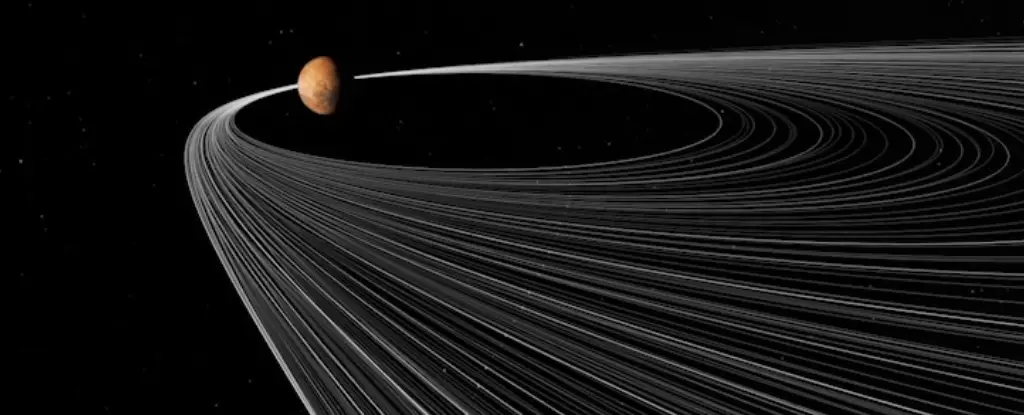For a long time, the origins of Mars’ moons, Deimos and Phobos, have intrigued scientists and astronomers alike. While Earth boasts a well-studied lunar companion, the complexities surrounding the Martian satellites remain unresolved. The expectations set by various theories rely heavily on limited data and computer simulations, thus highlighting the need for more thorough exploration and empirical evidence to substantiate any claims. This article delves into the leading theories regarding the origins of Mars’ moons and emphasizes the significance of ongoing and future research.
One of the most widely accepted hypotheses regarding the creation of Deimos and Phobos is their origin as captured asteroids. Observations reveal that these moons have characteristics akin to small asteroids, bolstering this theory. Yet, given Mars’ relatively smaller size and weaker gravitational field compared to Earth or Venus—which have no moons of their own—the likelihood of capturing not one, but two asteroids remains questionable.
In essence, it could be argued that the gravitational dynamics of a smaller planet such as Mars would make it significantly more difficult to “capture” a celestial body into a stable orbit. Furthermore, if the moons were indeed captured asteroids, one would expect their orbits to be more eccentric rather than the nearly circular patterns observed for Deimos and Phobos. This discrepancy poses a substantial challenge for the captured asteroid hypothesis and invites researchers to look deeper into alternative explanations.
Another prevalent theory suggests that the Martian moons originated from a significant impact event, much like the well-accepted model explaining our Moon’s formation. In this scenario, a large asteroid or comet—estimated at approximately three percent of Mars’ mass—collided with the planet early in its history. Although the impact would not be powerful enough to break Mars apart, it would create a significant debris field that could eventually coalesce into two separate bodies, thus forming Deimos and Phobos.
This hypothesis does seem to address the circular orbits of the moons more effectively than the captured asteroid model. However, it faces its own issues. The debris resulting from a planet-wide impact would likely be dispersed closely around Mars, which contradicts the spatial distribution observed for Deimos, as it orbits at a greater distance from the planet compared to Phobos. This suggests that while intriguing, the collision model fails to fully explain the positioning of Mars’ moons.
Recent computational analyses have introduced an intriguing middle ground that combines elements of both previous theories. This novel approach posits that instead of directly capturing an asteroid or resulting from a collision, Mars may have undergone a near-miss event with a massive asteroid. Such a close encounter could unleash tidal forces strong enough to fragment the asteroid, creating a series of smaller debris pieces that might become trapped in elliptical orbits around Mars.
As time passes, gravitational perturbations from the Sun and other celestial bodies would gradually alter the paths of these fragments. With collisions between this debris likely, a debris ring could emerge, leading to the eventual formation of Deimos and Phobos. This creative middle ground presents a coherent explanation accounting for the moons’ orbits and positions, offering a potentially comprehensive understanding of their origins.
Despite the progress made in understanding the origins of Mars’ moons, definitive answers remain elusive. The only way to truly resolve the mystery is through in-situ analysis of the moons themselves. Fortunately, the upcoming Mars Moons eXploration (MMX) mission, set to launch in 2026, promises a significant step forward. This mission aims to study both Deimos and Phobos directly, culminating in sample collection from Phobos.
Once samples from the Martian moons are returned to Earth, scientists will finally have the capability to conduct detailed analyses that could confirm or refute existing theories. The insights gained from this mission could illuminate not only the origin of Mars’ enigmatic moons but also advance our understanding of planetary formation and celestial mechanics more broadly.
While numerous theories suggest compelling possibilities for the origins of Mars’ moons, the definitive answer remains just out of reach. Ongoing research and future explorations will undoubtedly contribute to our understanding of these intriguing celestial bodies, deepening our appreciation for the complexities of our Solar System.



Leave a Reply